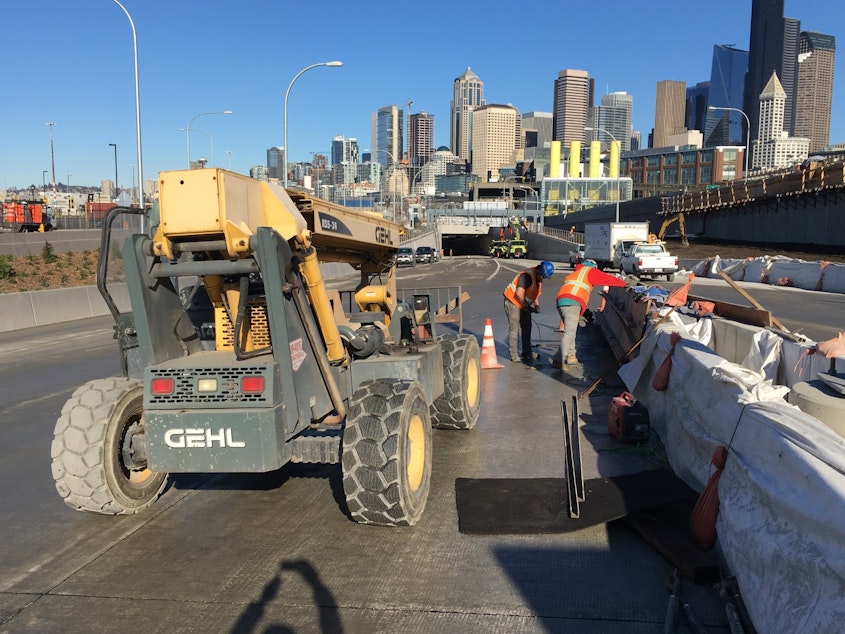Commute each day as if it were 'viadoom'

The new tunnel beneath Seattle’s waterfront could open as soon as Monday. It’s the product of years of planning.
But the tunnel is not the viaduct, and commuters who relied on the viaduct will need to make new routes to get downtown.
The first thing you notice, when you stand near the southern tunnel exit, is the smell of wet concrete. The smell comes from concrete barriers, curing in the winter sun.
There’s something else that’s not quite cured, either: our sense of what drivers will do when the tunnel opens.
“What we think will happen almost certainly will not be what will happen,” said Heather Marx, of Seattle’s transportation department. Marx said you can run all the traffic models you want, but drivers are going to improvise.
The tunnel has no off ramps downtown, so downtown workers using the tunnel will overshoot their destination and then have to work their way back, through congested neighborhoods like South Lake Union.
Or they could avoid the tunnel and take the bus.
Commuters from West Seattle who want to use 99 will have to wait at least another week until the Dearborn Street off ramp opens. If they don't, those wanting to exit 99 before reaching downtown will find themselves swept all the way to Seattle Center.
Sponsored
Viadoom avoided
The “viadoom” period (after the viaduct closed, but before the tunnel opened) turned out to be less congested than engineers had predicted. But the lack of a traffic disaster doesn’t mean Seattle doesn’t need the tunnel, at least not according to WSDOT's David Sowers.
Sowers said the adjustments people made for the viaduct closure may not be sustainable. “Maybe people had doctor’s appointments and they said 'I’m not going to do my annual physical in January, I’ll do it in February.'”
So in other words, Sowers believes there’s pent up demand for the highway.
But the larger set of traffic disruptions, collectively known as the Seattle Squeeze, will last much longer than viadoom. Buses will soon get kicked out of the downtown transit tunnel and pushed onto city streets. Seattle can expect more congestion due to the redevelopment of Key Arena, the expansion of the Washington State Convention Center, work on Alaskan Way and the waterfront, the demolition of the viaduct and even work on Washington state Route 520.
Sponsored
Relief won't come until 2021, when rail opens to Northgate, and 2023, when light rail extends to Bellevue.
What credence should we pay to these warnings, given the relative calm that followed predictions of viadoom?
There's a common piece of advice offered to college students at their graduation ceremonies: Live each day as if it were your last. That advice can be modified to make Seattle traffic much better: Commute each day as if it were Viadoom.
You can learn more about how to use the new tunnel on WSDOT's tunnel information page.




